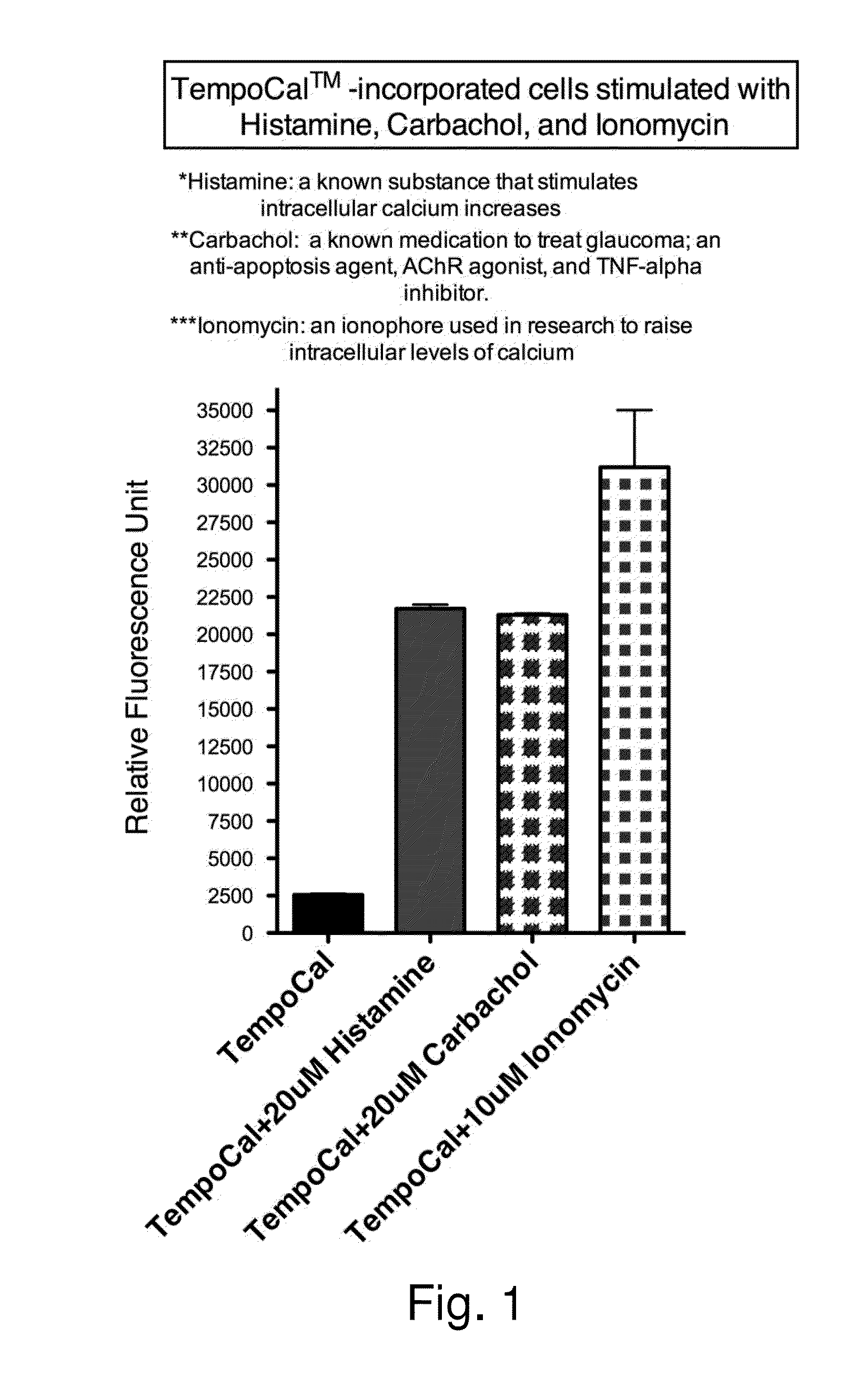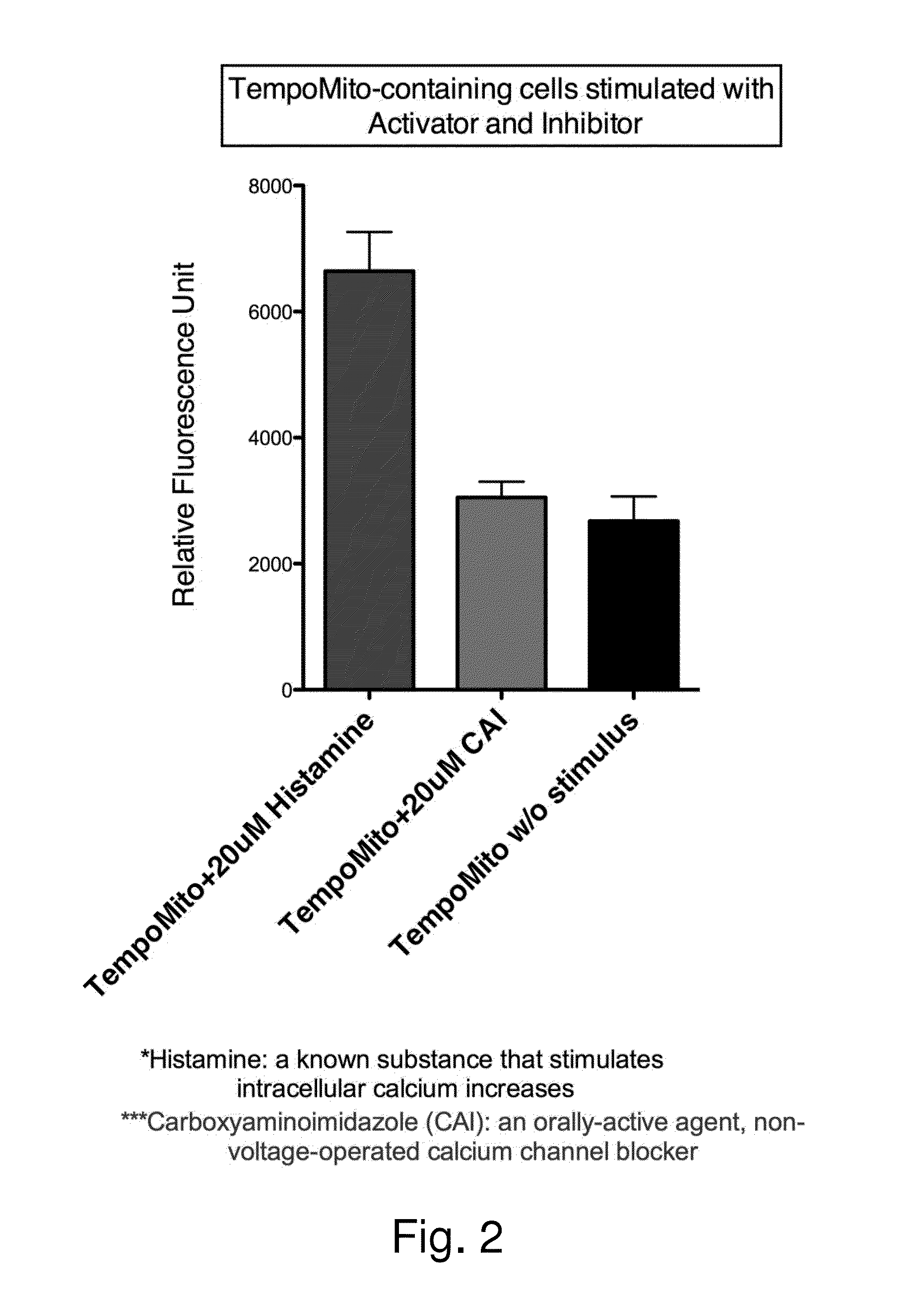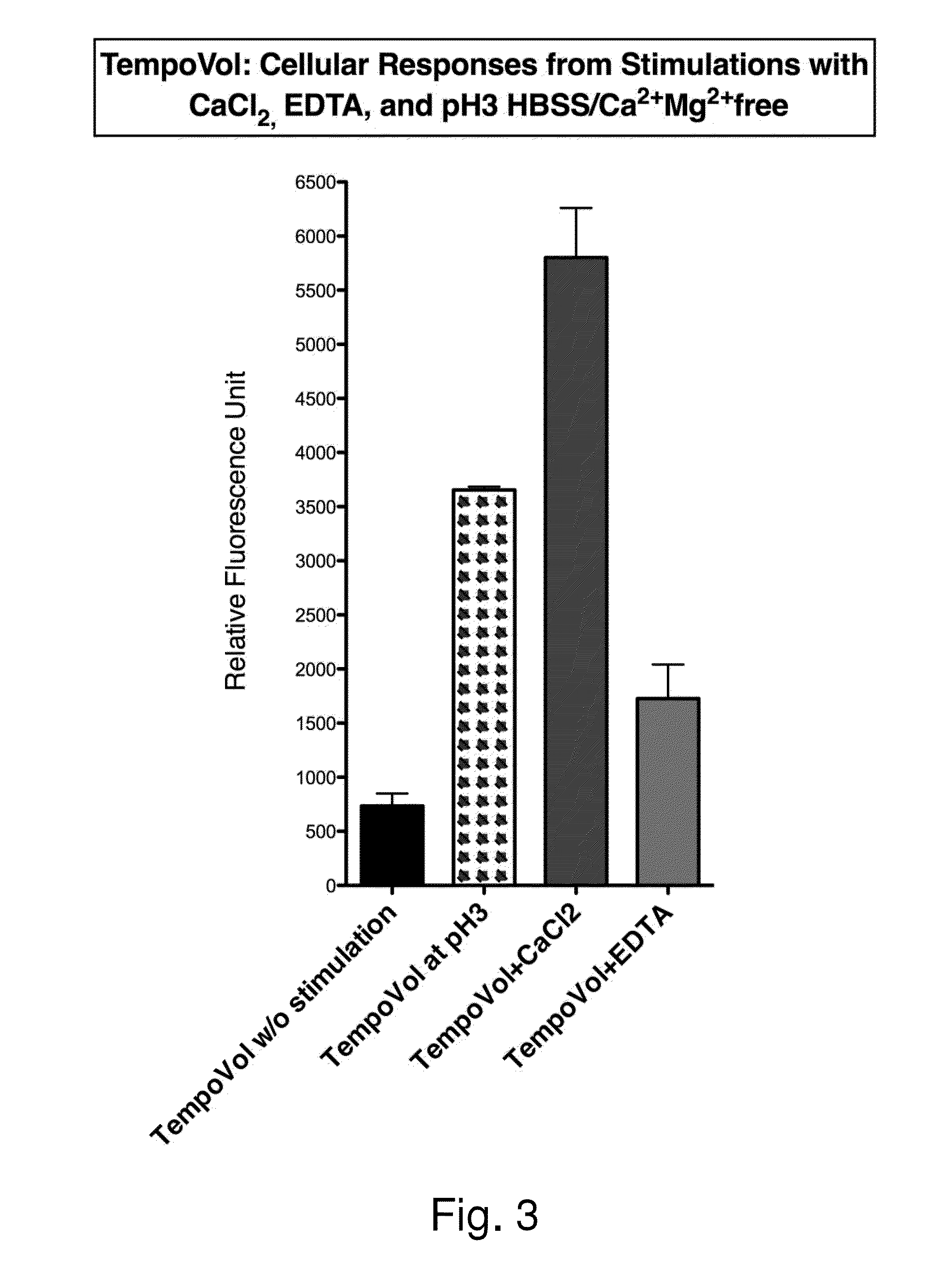Human Cellular Models with Biosensors
a biosensor and human cellular technology, applied in the field of human cellular models with biosensors, can solve the problems of limited signal resolution of gecis, limited range of available applicable cell types, limited range of available cell types, etc., to avoid loss of activity and retain function.
- Summary
- Abstract
- Description
- Claims
- Application Information
AI Technical Summary
Benefits of technology
Problems solved by technology
Method used
Image
Examples
example 1
Voltage Sensor Construct
[0097]Presented is a voltage sensor for use in intracellular environments. The voltage sensor is a peptide construct featuring a combination of interacting structural features. The expressed peptide construct includes a transmembrane domain, voltage sensing domain, and a fluorescent reporter. The transmembrane can anchor the sensor to a lipid membrane in a cell of choice. The voltage sensing domain can include, e.g., polar or ionic groups that are sensitive to changes in the surrounding ionic environment or to a voltage potential across the anchoring membrane. The fluorescent reporter is a fluorescent peptide sequence, e.g., adapted to be sensitive to conformational changes in other domains of the construct.
[0098]The transmembrane domain typically includes hydrophobic amino acid residues that interact with lipids of the membrane to anchor the construct. Further, the transmembrane domain can provide multiple transmembrane structures, together comprising an ion...
example 2
Calcium Sensor Construct
[0103]The structural features of exemplary calcium sensor constructs include a complementary combination of a calmodulin-binding domain, a troponin domain, and a fluorescent reporter domain. The construct can further include one or more tag sequences to target the construct to a particular intracellular location or environment. The complementary combination of tandem arrays of EF-hand domains that include a calmodulin-like-binding domain and a troponin-like domain, and a fluorescent reporter domain. The fluorescent reporter is a fluorescent peptide sequence, e.g., adapted to be sensitive to conformational changes in other domains of the construct.
[0104]The calcium sensor components interact as follows. Calcium-binding to EF hand domains leads to a conformational change and surface hydrophobicity changes in the peptide construct. The changed calcium binding domains then interact differently with the fluorescent reporter domain causing a substantial and measura...
example 3
Targeting Tags
[0107]In many cases, it is advantageous to direct the voltage sensor or calcium sensor to a particular intracellular membrane or compartment. The biosensors of the invention can include peptide segments adapted to have an affinity for a cellular target.
[0108]Exemplary peptide sequences useful in targeting biosensors to a desired intracellular location include, e.g.:
NLS tag (protein sequence):(SEQ ID NO: 3)DPKKKRKV.ER tag:(SEQ ID NO: 8)KDEL Endosome tag:(SEQ ID NO: 9)NPTY--DXXLL--YXXoo(protein sequence; tandem motifs; oo = 2two residues with hydrophobic side groups;Ciliary tag:VxPx-RVxP-KVHPSST-AxEGG (protein sequence;tandem motifs-SEQ ID NO: 10)Human endosome sequence tag(SEQ ID NO: 11)MTSRKKVLLKVIILGDSGVGKTSLMHRYVND SEQ ID NO: 16 human synapsin tag:CCTGCAGGGCCCACTAGTATCTGCAGAGGGCCCTGCGTATGAGTGCAAGTGGGTTTTAGGACCAGGATGAGGCGGGGTGGGGGTGCCTACCTGACGACCGACCCCGACCCACTGGACAAGCACCCAACCCCCATTCCCCAAATTGCGCATCCCCTATCAGAGAGGGGGAGGGGAAACAGGATGCGGCGAGGCGCGTGCGCACTGCCAGCTTCAGCACCGCGGA...
PUM
| Property | Measurement | Unit |
|---|---|---|
| wavelengths | aaaaa | aaaaa |
| light wavelengths | aaaaa | aaaaa |
| excitation wavelengths | aaaaa | aaaaa |
Abstract
Description
Claims
Application Information
 Login to View More
Login to View More - R&D
- Intellectual Property
- Life Sciences
- Materials
- Tech Scout
- Unparalleled Data Quality
- Higher Quality Content
- 60% Fewer Hallucinations
Browse by: Latest US Patents, China's latest patents, Technical Efficacy Thesaurus, Application Domain, Technology Topic, Popular Technical Reports.
© 2025 PatSnap. All rights reserved.Legal|Privacy policy|Modern Slavery Act Transparency Statement|Sitemap|About US| Contact US: help@patsnap.com



